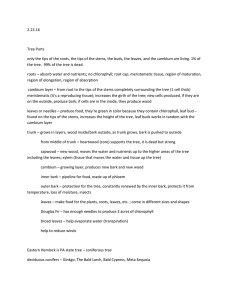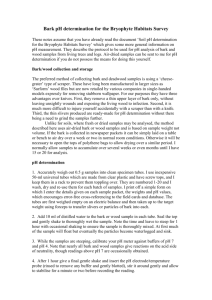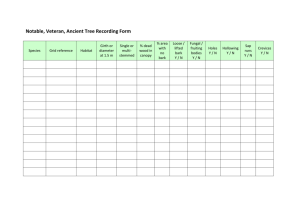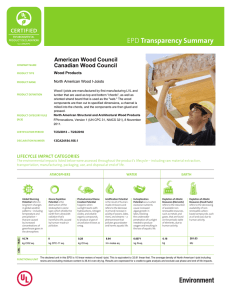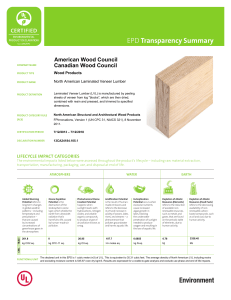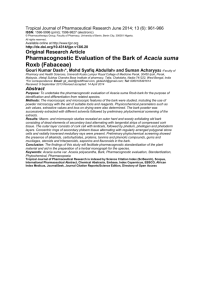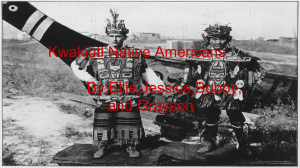TREES OF THE YEAR 2001
advertisement
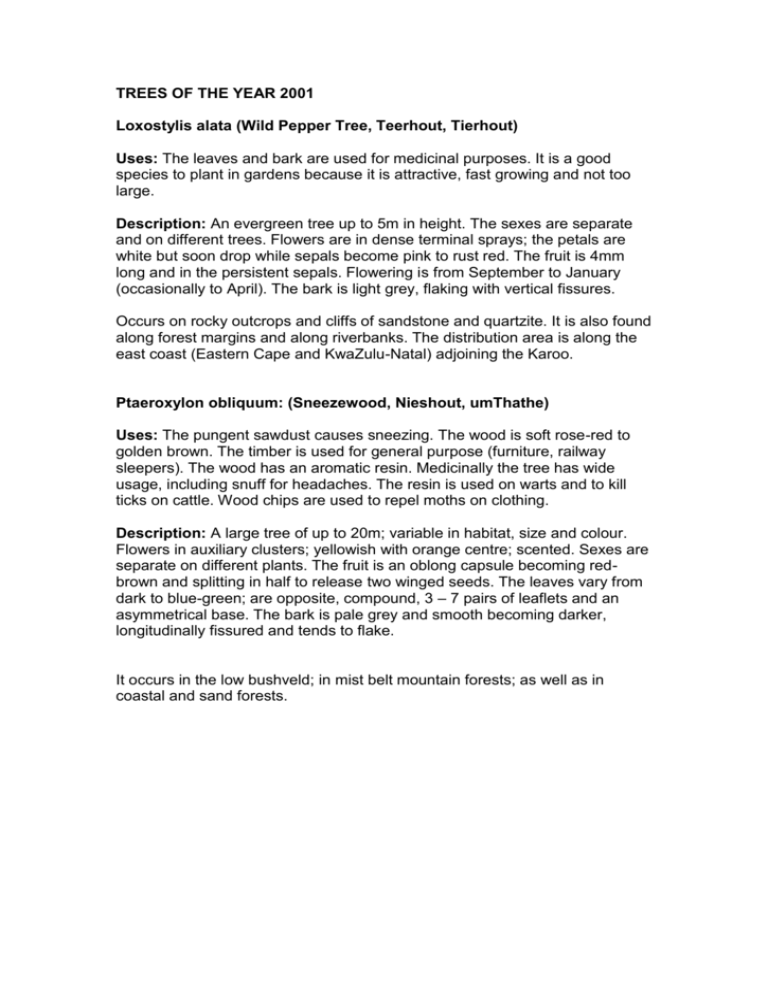
TREES OF THE YEAR 2001 Loxostylis alata (Wild Pepper Tree, Teerhout, Tierhout) Uses: The leaves and bark are used for medicinal purposes. It is a good species to plant in gardens because it is attractive, fast growing and not too large. Description: An evergreen tree up to 5m in height. The sexes are separate and on different trees. Flowers are in dense terminal sprays; the petals are white but soon drop while sepals become pink to rust red. The fruit is 4mm long and in the persistent sepals. Flowering is from September to January (occasionally to April). The bark is light grey, flaking with vertical fissures. Occurs on rocky outcrops and cliffs of sandstone and quartzite. It is also found along forest margins and along riverbanks. The distribution area is along the east coast (Eastern Cape and KwaZulu-Natal) adjoining the Karoo. Ptaeroxylon obliquum: (Sneezewood, Nieshout, umThathe) Uses: The pungent sawdust causes sneezing. The wood is soft rose-red to golden brown. The timber is used for general purpose (furniture, railway sleepers). The wood has an aromatic resin. Medicinally the tree has wide usage, including snuff for headaches. The resin is used on warts and to kill ticks on cattle. Wood chips are used to repel moths on clothing. Description: A large tree of up to 20m; variable in habitat, size and colour. Flowers in auxiliary clusters; yellowish with orange centre; scented. Sexes are separate on different plants. The fruit is an oblong capsule becoming redbrown and splitting in half to release two winged seeds. The leaves vary from dark to blue-green; are opposite, compound, 3 – 7 pairs of leaflets and an asymmetrical base. The bark is pale grey and smooth becoming darker, longitudinally fissured and tends to flake. It occurs in the low bushveld; in mist belt mountain forests; as well as in coastal and sand forests.
